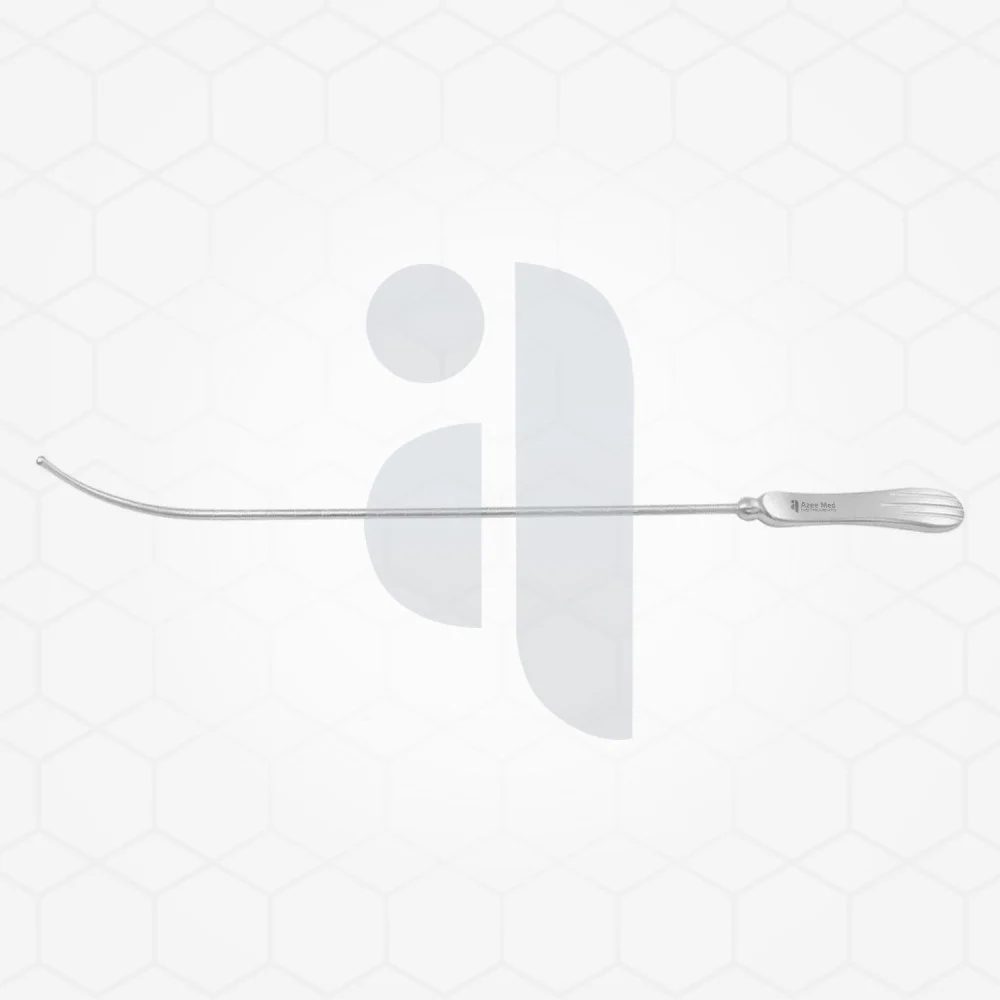In the world of surgery, where every movement counts, precision and accuracy are paramount. Surgeons rely on a variety of specialized instruments to ensure that procedures are performed with the utmost care and efficiency. One such instrument that plays a crucial role in achieving this precision is the Guyon sound. This slender, flexible tool is used in a variety of surgical fields, including neurosurgery and orthopedics, to probe, explore, and measure delicate structures. Understanding the design, functions, and applications of the Guyon sound is essential for appreciating its significant role in modern surgery.

The Unique Design and Functionality of the Guyon Sound
The Guyon sound is an elongated, slender instrument that is typically made from high-quality stainless steel, providing both durability and resistance to corrosion. Its flexible shaft makes it adaptable to different surgical environments, allowing surgeons to navigate narrow or confined spaces. The instrument's blunt, rounded tip ensures that it can explore tissues without causing unnecessary damage. It is commonly used in procedures that involve delicate tissues, where precision is critical.
A distinguishing feature of the Guyon sound is its calibrated markings along the shaft, which allow surgeons to measure the depth of structures with accuracy. These markings are essential during procedures that require precise navigation and identification of structures beneath the surface. The smooth surface of the Guyon sound further contributes to its ability to move effortlessly through tissues, reducing the risk of trauma or friction-induced injury.
Surgical Applications of the Guyon Sound
The Guyon sound is primarily used in neurosurgical procedures, particularly in the exploration and evaluation of the carpal tunnel in the wrist. In these surgeries, the Guyon sound allows surgeons to probe the tunnel and locate the median nerve, ensuring that it is protected during the procedure. The instrument's flexibility and precision help identify structures without causing harm, which is especially important when dealing with the intricate anatomy of the hand and wrist.
Additionally, the Guyon sound is also frequently employed in orthopedic surgeries. For instance, it is used in hand, wrist, and foot procedures to probe delicate nerves and arteries. The sound helps surgeons assess the depth of tissues and measure the location of important structures such as tendons, blood vessels, and nerves. This is particularly valuable in surgeries where the anatomy is complex and the structures being operated on are in close proximity to one another.
Trauma surgeries also benefit from the use of the Guyon sound. Surgeons can use the instrument to explore areas where tissue has been damaged, and its precise measurements allow for careful navigation around injured nerves, blood vessels, or other critical structures. The ability to assess depth and locate specific structures makes the Guyon sound an indispensable tool in traumatic injury repair and reconstruction surgeries.
Benefits of Using the Guyon Sound
The primary advantage of the Guyon sound is its precision. The graduated markings on the shaft help ensure that measurements are accurate, which is crucial when working in areas where small miscalculations can have significant consequences. The instrument's blunt tip allows it to navigate delicate tissues without causing damage, which is especially important in sensitive areas such as the carpal tunnel or around critical nerves.
Another key benefit of the Guyon sound is its versatility. Although it is most commonly used in neurosurgical and orthopedic procedures, the instrument can be adapted for a wide range of surgical applications. Its slender design and flexibility allow it to be used in a variety of procedures, including those involving the hand, wrist, and feet, as well as in diagnostic settings where precise measurement and exploration are required.
The Guyon sound is also ergonomic, making it easier for surgeons to manipulate during lengthy procedures. Its design ensures that it provides a comfortable grip, reducing hand fatigue during complex surgeries. This added control allows surgeons to focus on the task at hand, ensuring better outcomes for patients.
Maintenance and Care of the Guyon Sound
Proper care and maintenance of the Guyon sound are essential to ensure its longevity and continued functionality. After each use, the sound must be thoroughly cleaned and sterilized to prevent contamination. Its stainless steel construction helps prevent rust, but regular inspection for signs of wear and tear is necessary to maintain its performance.
The graduated markings on the shaft should also be checked for accuracy, as any misalignment could compromise the precision of the instrument. The shaft should be carefully inspected for any signs of bending or damage, as this could affect its ability to perform its intended function.
The Guyon sound should be stored in a clean, dry environment when not in use. Proper storage helps prevent the instrument from becoming damaged or corroded. Additionally, it is important to handle the Guyon sound with care to avoid any accidental drops or impacts that could cause misalignment or damage.
Conclusion
The Guyon sound is a critical tool in the surgical field, providing precision, flexibility, and control during a wide variety of procedures. From neurosurgery to orthopedics, this instrument allows surgeons to navigate delicate structures and measure depth with accuracy, ensuring that critical tissues are protected and that procedures are performed with minimal risk. Its versatility and ergonomic design make it an indispensable tool in the operating room, helping healthcare professionals achieve optimal outcomes for their patients. By understanding the importance of the Guyon sound and maintaining it properly, surgeons can continue to rely on it as a vital part of their surgical toolkit.
Comments on “Guyon Sound: A Vital Instrument for Precision in Surgery”